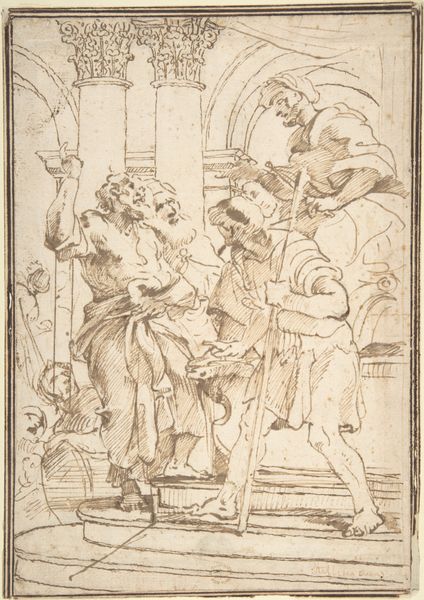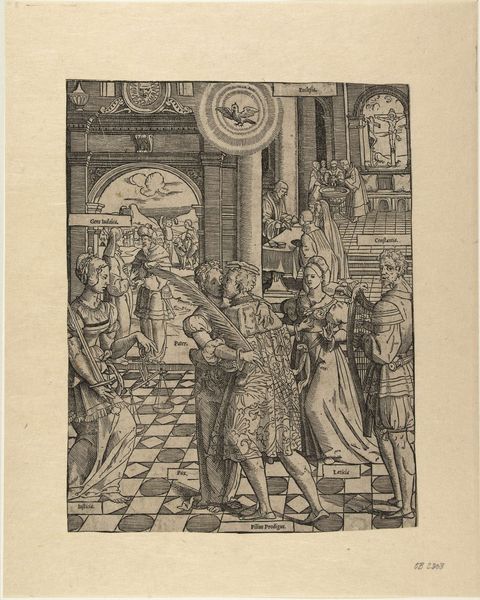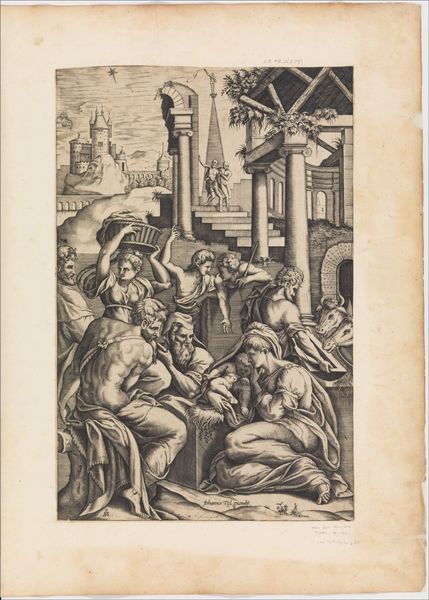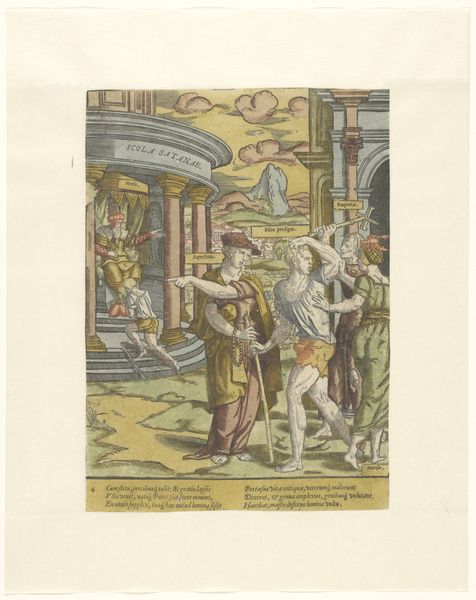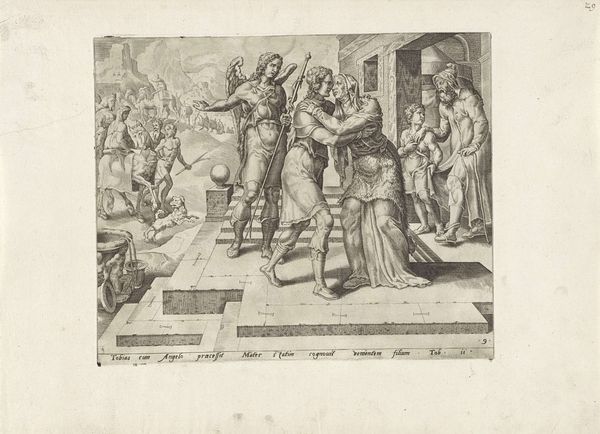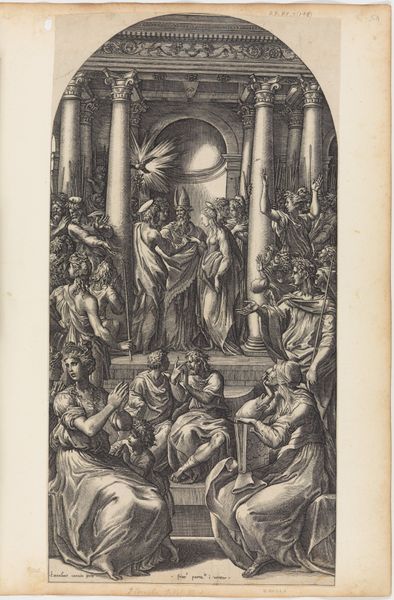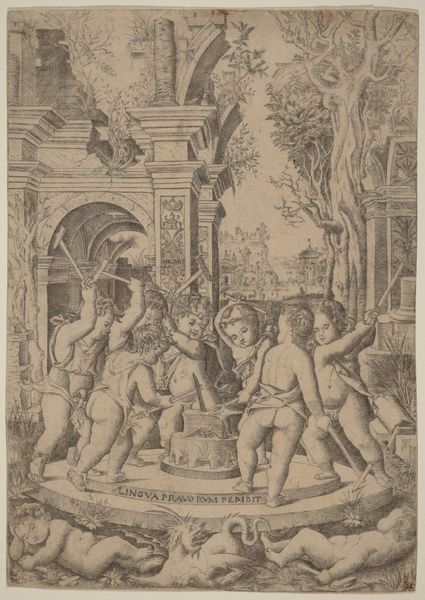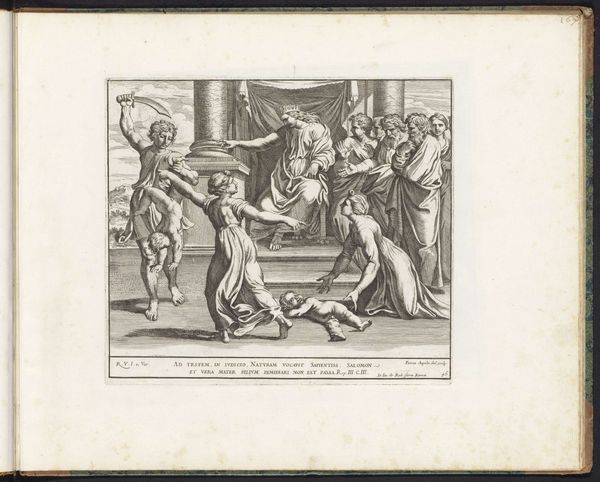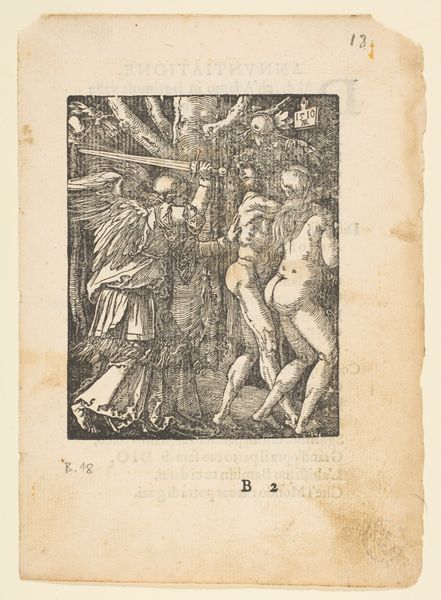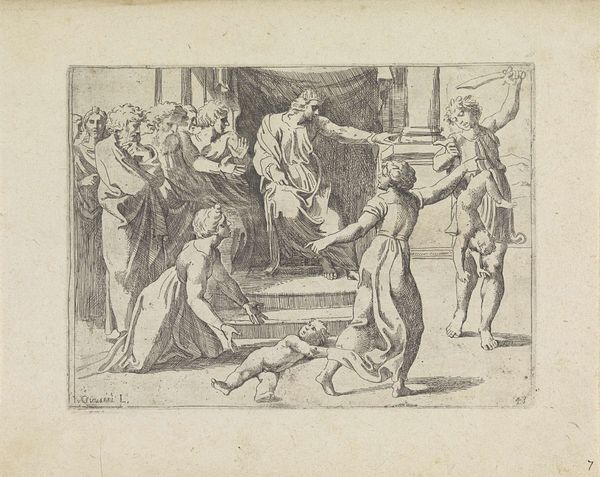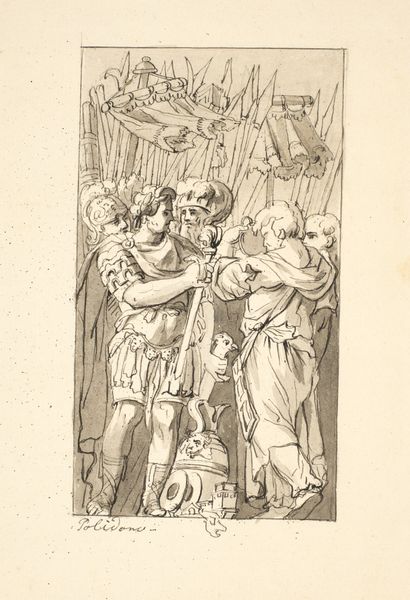
print, engraving
#
ink drawing
#
narrative-art
# print
#
figuration
#
history-painting
#
northern-renaissance
#
engraving
Dimensions: height 272 mm, width 211 mm
Copyright: Rijks Museum: Open Domain
Editor: This is "The Expulsion of the Prodigal Son," an engraving by Cornelis Anthonisz. made between 1535 and 1545. I find the rigid lines and almost theatrical poses of the figures really striking. How do you read this scene, considering its place in the 16th century? Curator: The political context of the Reformation is vital to understanding this print. Note the building on the left, labeled "Synagoga Sathanae"—Synagogue of Satan. This is not a literal synagogue, but a symbolic representation of religious corruption, a frequent theme during this period, often deployed as anti-Catholic imagery. What effect does this specific imagery have, do you think, on the story of the prodigal son? Editor: So, it’s not *just* a biblical narrative, but also a commentary on religious authority? It’s powerful how the artist connects moral failing to institutions. Curator: Precisely. Consider also the figures expelling the son. Are they offering justice, or are they caught in the very sin – pride – that the “Synagogue of Satan” represents? Is Anthonisz. suggesting true moral reform must come from *outside* established structures? The very act of circulating this image, as a print, participates in a growing public sphere, and allows the viewer to think about the meaning of moral judgment in a changing world. Editor: That makes me think about the power of art in that period to actually shape opinions and incite change. This really complicates my understanding. Curator: Indeed, and that's precisely the point. Art doesn't simply reflect its time, it actively participates in it. And these engravings allowed wider circulation of pointed ideas to people outside of established elite networks. Editor: It’s fascinating how a story can hold so many layers when viewed through its historical lens. Curator: Absolutely! It forces us to consider whose voice is amplified through art and for what purpose.
Comments
No comments
Be the first to comment and join the conversation on the ultimate creative platform.
